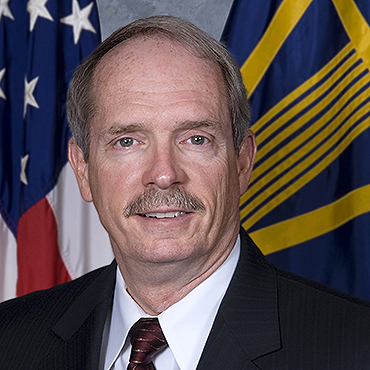DISA CIO: Don't discount 'DOD mindset' on data protection

David Bennett touts the potential of standardized and virtualized IT, while returning to a sticking point between DOD and industry: liability in the event of data loss.

DISA CIO David Bennett says better government-industry dialogue could ease "finger-pointing" on the liability issue.
More government-industry dialogue is needed for commercial cloud providers to navigate the "learning curve" on liability issues inherent in hosting Defense Department data, a top Pentagon IT official told FCW.
Cloud providers must understand that the "DOD mindset" of safeguarding data in the cloud "is not always the same as what you're going to find in the commercial space," Defense Information Systems Agency CIO David Bennett said in a Feb. 11 interview.
Hashing out the issue of legal liability will be key for a Defense Department trying to more quickly adopt commercial cloud. Acting DOD CIO Terry Halvorsen made that clear at the Pentagon’s first cloud industry day last month, saying he had heard concerns from cloud firms about the reputational damage that could come from losing DOD data.
Bennett said Pentagon officials are still trying to figure out which data they want to host in the department’s own milCloud and which data to make available for commercial hosting. More government-industry dialogue on the subject will help prevent "finger-pointing" on the liability issue, he added.
Speaking earlier on Feb. 11 at an FCW-sponsored conference, the DISA CIO also made the case that standardized IT services could help clarify who within a provider is responsible for cloud-based data.
DISA runs 11 data centers around the world that host some 2,500 applications, he said. That wide range of applications complicates Bennett’s push for standardized IT. "The problem is, every time you optimize on an application and you create a very unique instance of that application, you're going to need unique people, people who know that application in and out," which drives up costs, he said.
Virtualizing IT environments and enforcing standard architectures can cut costs, he said, but "you really have to be ruthless about determining what that environment looks like."
And he cautioned that vendors should first think through data and interoperability questions before moving to a virtual environment. Too often, Bennett said, application developers do not adequately plan for failover, data backups or other measures to guard against system failures.
Understanding risks is paramount, Bennett told FCW, regardless of whether the system in question is physical, virtualized on-premises or in the cloud. Vendors should not assume, for example, that cybersecurity protections are baked into the cloud, he said. "We can do certain things, but we can't create miracles."
Bennett added that organizations moving data to the cloud need to ask themselves: "Are you comfortable with the risk associated with your data being exposed in that cloud environment, whether it's an on-premises cloud within the DOD fence line or it's out in the commercial space?"


